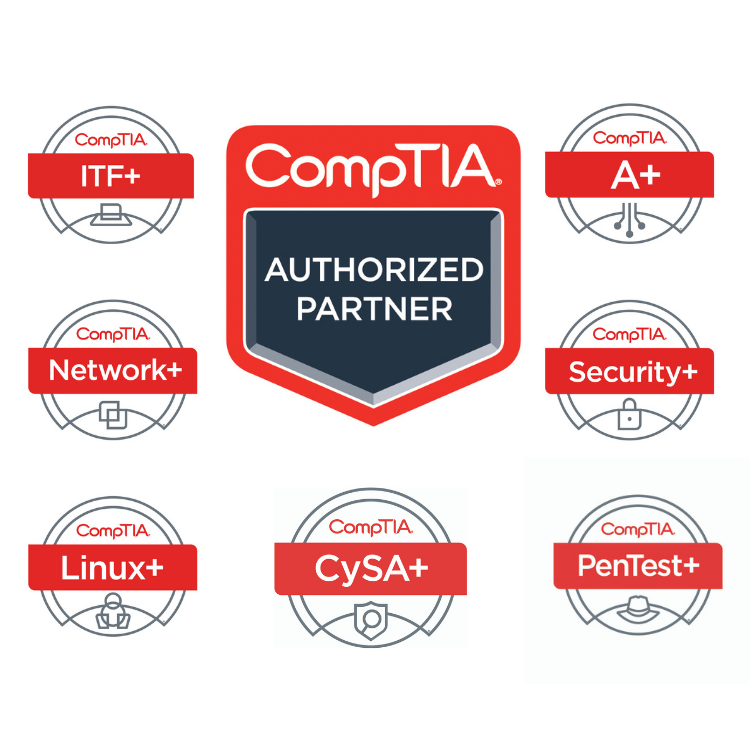Become a Cyber Security Consultant
With our job offer guarantee programmeAverage salary of £70,000 per annum!
Guaranteed Finance on all of our courses! Book a call now.
Book the call that will change your life now! It only takes 30 seconds
Step 1: Pick the date and time that best suits you.
Step 2: Enter your details and click confirm.
Step 3: We’ll call you at your chosen date and time to see if you qualify.
Want to speak sooner? Call us on 0203 982 7573

The IT Career Swap Process
Step 1: Consultation
Unsure what course is right for you? We will walk you through what the options are and how you can benefit by starting it.
The consultation is free of charge and we will find the perfect course for your needs.
If you’d like to book this consultation call now, please just click here:
Step 2 : Online Studying
All courses are delivered online, meaning you will be able to access the materials at any time, 24/7 for the one year that your course is active. This package will build you through CompTIA’s core syllabus: A+, Network+ and Security+ before then moving onto study and master the Microsoft Windows operating system versions 7 & 10, Cisco’s networking technologies. You will then complete your studies with more in depth cyber security CompTIA courses: Linux and CySA.
Step 3: Practical Placement – LiveLabs
Once you have completed your online training modules its time to get some hands on experience.
Live-Lab is real computer equipment networked together and conveniently accessible over the internet.
Our hosted platforms are configured to imitate real world configurations by providing sufficient hardware not only to carry out tasks, but also test the impact of those changes
Step 4: CompTIA A+ and CySA+ Exams
You will finally be prepared for the official CompTIA A+ and CySA+ Certifications exams. CompTIA are international leaders in IT certifications and obtaining both your CompTIA A+ and CySA certifications will not only qualify you as an IT Technician and later as a Cyber Security Analyst not only in the UK but across the globe.
Step 5: Job Placement
Upon completion of all online courses, quizzes, examinations, assignments and live labs we will assign you a Career Agent and we will re-model your CV and start to source you interviews with our local partners within your area. We guarantee to get you a job offer through our programme.
The main difference between us and other IT training companies is that our sister company has over 5,000 employer partnerships in operation so we can place you into work all over the country with a number of different companies, often with multiple options.
Take advantage of our job offer guarantee for just £69 a month
FAQs
Which of these courses would be the best starting point for my studies?
We recommend starting your studies with the CompTIA A+ course, as it will provide you with the basic knowledge that is essential when starting an IT career.
What is a Live Lab?
A Live Lab consists of computer equipment that you are able to access and manipulate through your browser. You will have the ability to work with real switches, servers and routers in order to gain valuable practical experience.
Do you offer finance?
Yes and at 0%, all you do is choose a payment plan to suit your financial needs with our easy, monthly payment options over 12 months.

Key Learning Points: Year 1
This package will help you to build a full understanding of many factors within cyber security:
CompTIA IT Fundamentals
Start your IT journey with this foundational course, equipping you with essential skills in computer components identification, workstation setup, software installations, and network connectivity. Ideal for beginners aiming to enter the dynamic field of IT.
CompTIA A+
Dive into the world of IT support with this comprehensive course, covering device configuration, data backup and recovery, and operating system configuration. Prepare to earn your CompTIA A+ certification and become a proficient IT problem solver.
CompTIA Network+
Master the intricacies of wired and wireless network management with this detailed certification course. From troubleshooting to network security implementation, you’ll gain the skills needed to excel in network administration roles.
CompTIA Security+
Strengthen your cybersecurity skills with this comprehensive course focused on CompTIA Security+ certification objectives. From information security concepts to threat detection strategies, you’ll be prepared to tackle cybersecurity challenges effectively.
CompTIA Cloud+ Essentials
Explore the basics of cloud computing and its practical applications, covering service models, deployment options, and security considerations. Ideal for beginners entering the cloud computing domain.
Windows 10 Installation & Configuration
Learn the essentials of installing and configuring Windows 10 systems, ensuring optimal performance and security in enterprise environments. Perfect for IT professionals seeking expertise in Windows desktop administration.
Windows 10 Configuring Windows Devices
Explore advanced configurations for Windows 10 devices in enterprise settings. From deployment to data protection, this course prepares you to manage Windows environments effectively.
AWS Intro & Deep Dive
Get introduced to Amazon Web Services (AWS) and its core services, including EC2, S3, and database services. Gain practical insights into leveraging AWS for diverse cloud computing needs.
Azure Fundamentals
Dive into the foundational concepts of Microsoft Azure cloud platform, including services, deployment models, and security features. Perfect for those starting a career in cloud computing.
Cisco CCNA
Prepare for the latest CCNA exam with this comprehensive course covering network fundamentals, security, and automation. Ideal for those aspiring to excel in Cisco networking environments.
Microsoft Office 365 Online
Master the online versions of Microsoft Office 365 applications, facilitating seamless collaboration and productivity in cloud-based environments. Perfect for users transitioning to cloud-based productivity tools.
Microsoft SQL Server 2019 Administration
Learn the fundamentals of administering Microsoft SQL Server databases, from installation to security management. Essential for IT professionals involved in database administration tasks.
ITIL®
Gain insights into IT service management best practices with this comprehensive course focusing on ITIL® Service Operations. Learn essential techniques for delivering high-quality IT services and enhancing organisational efficiency.
Advanced Learning Points: Year 2
This package will help you to evolve your understanding of many factors within cyber security:
CompTIA Linux+
Transition from IT fundamentals to Linux administration with this course. Expand your knowledge of operating systems by mastering Linux administration tasks, command-line operations, and system configuration, essential for cybersecurity professionals.
CompTIA CySA+
Prepare for the CompTIA Cybersecurity Analyst (CySA+) exam with this comprehensive course covering both CS0-002 and CS0-003. Building upon your network and system administration skills, this course covers advanced techniques in threat detection, analysis, and response, essential for cybersecurity analyst roles.
CompTIA Cloud+ Advanced
Deepen your understanding of cloud computing with this advanced course. Building upon your knowledge of cloud essentials, this course covers advanced topics in cloud architecture, deployment models, and security considerations, essential for securing cloud environments.
CompTIA PenTest+
Dive into advanced cybersecurity techniques with a focus on penetration testing. Building upon your IT troubleshooting skills, this course equips you with the expertise needed to identify and exploit vulnerabilities in network systems, preparing you for offensive security roles.
CompTIA CASP+
Elevate your expertise in cybersecurity with the CompTIA Advanced Security Practitioner (CASP+) certification. Building upon your knowledge of security architecture and risk management, this course covers advanced topics in enterprise security solutions.
Certified Information Systems Auditor
Advance your career in cybersecurity auditing with the Certified Information Systems Auditor (CISA) certification. Building upon your understanding of auditing and compliance, this course covers advanced topics in information systems auditing, governance, and risk management.
Certified Information Security Manager
Transition into cybersecurity management with the Certified Information Security Manager (CISM) certification. Building upon your understanding of cybersecurity governance, risk management, and compliance, this course prepares you for leadership roles in cybersecurity.
CCSP
Master cloud security principles with the Certified Cloud Security Professional (CCSP) certification. Building upon your knowledge of cloud computing, this course covers advanced topics in cloud security architecture, data security, and compliance.
Certified Ethical Hacker
Dive into advanced ethical hacking techniques with the latest version of the Certified Ethical Hacker course. Building upon your understanding of CEH principles, this course covers advanced hacking tools and methodologies, preparing you for offensive security roles.
Python for Cyber Security
Transition into the world of programming with an introduction to Python. Building upon your IT skills, this course teaches the fundamentals of Python programming language, empowering you to automate tasks, analyse data, and develop cybersecurity tools.
Data Security: PII Protection
Strengthen your cybersecurity capabilities by mastering the protection of Personally Identifiable Information (PII). Building upon your understanding of data security principles, this course covers advanced techniques in data encryption, access controls, and regulatory compliance, essential for safeguarding sensitive information.
Computer Hacking Forensic Investigation
Master the art of digital forensics with this specialised course. Building upon your knowledge of hacking and security, this course equips you with the skills needed to investigate cybercrimes, collect digital evidence, and present findings in legal proceedings.
DevOps Fundamentals
Explore DevOps principles and practices to enhance collaboration and efficiency in IT operations. Building upon your understanding of IT infrastructure, this course introduces you to DevOps methodologies, empowering you to streamline software development and deployment processes.
What our students are saying

330+ Excellent Reviews Online
Guaranteed Finance on all of our courses! Book a call now.
Book the call that will change your life now! It only takes 30 seconds
Step 1: Pick the date and time that best suits you.
Step 2: Enter your details and click confirm.
Step 3: We’ll call you at your chosen date and time to see if you qualify.
Want to speak sooner? Call us on 0203 982 7573

We're Here To Help!
Head Office
Mortimer House Chatsworth Parade
Petts Wood
Kent
BR5 1DE
Hours
Mon - Fri: 8.30am - 6.00pm
Call Us
0203 982 7573
